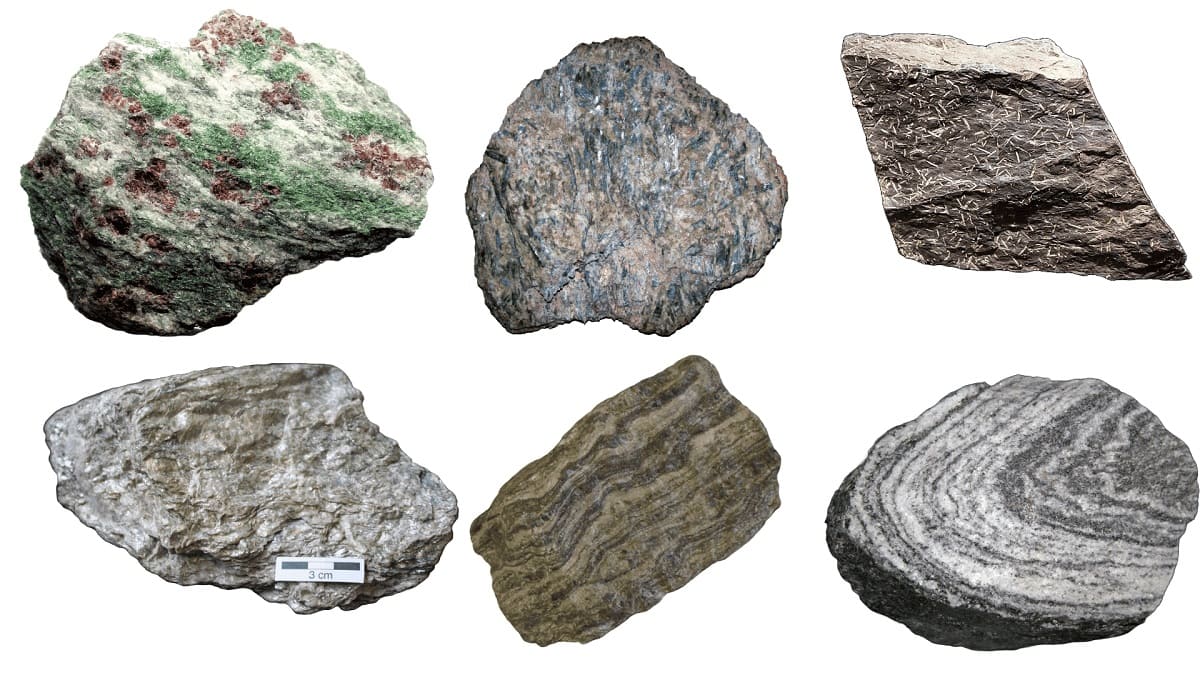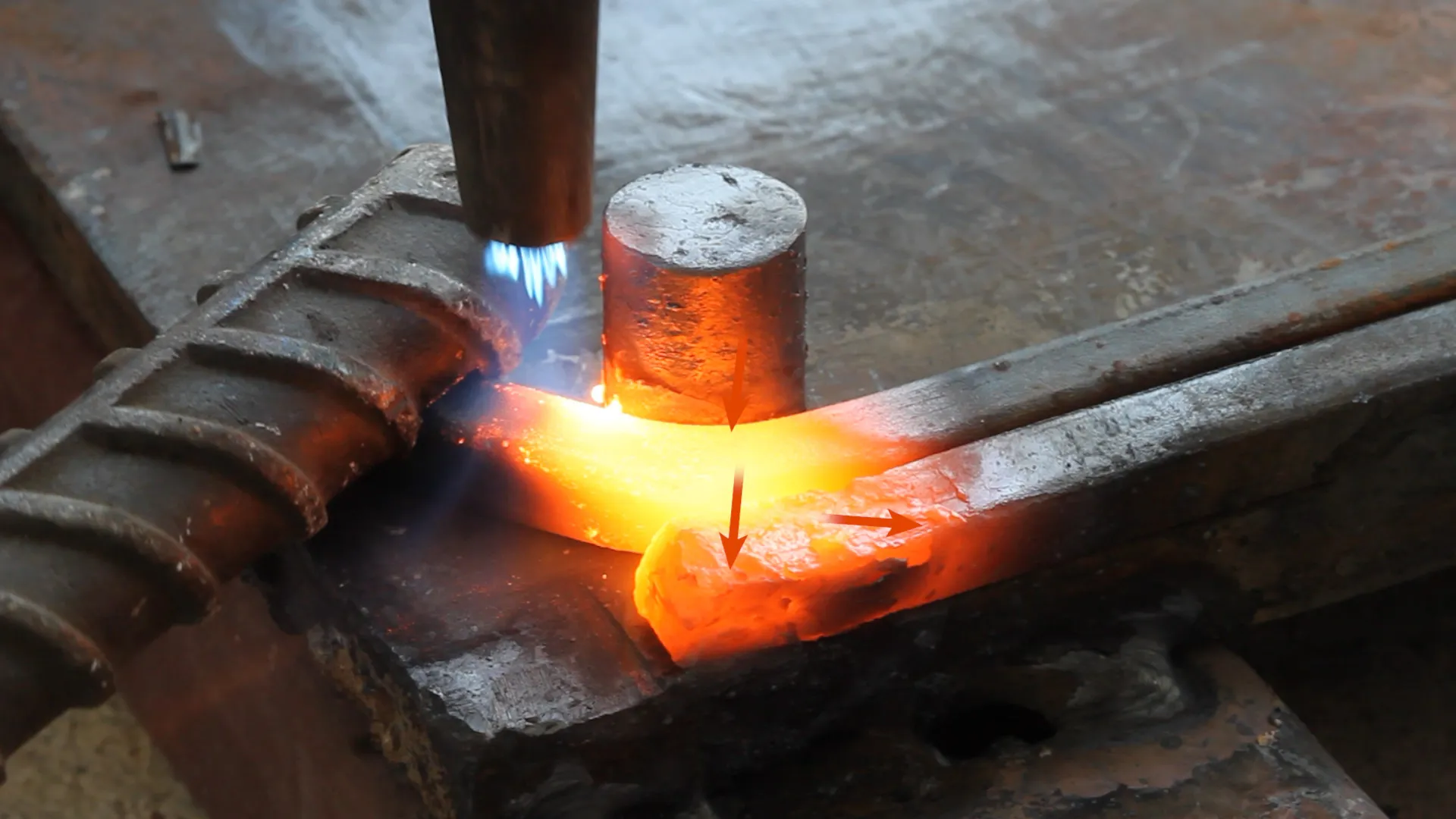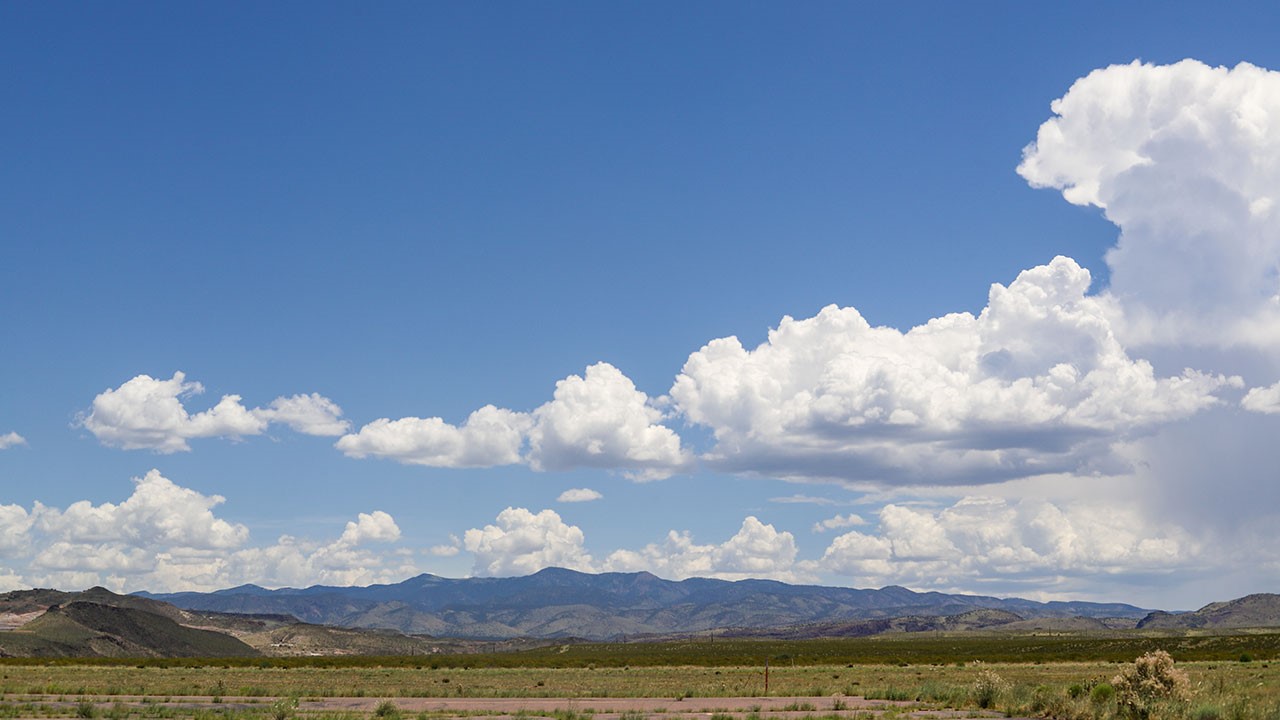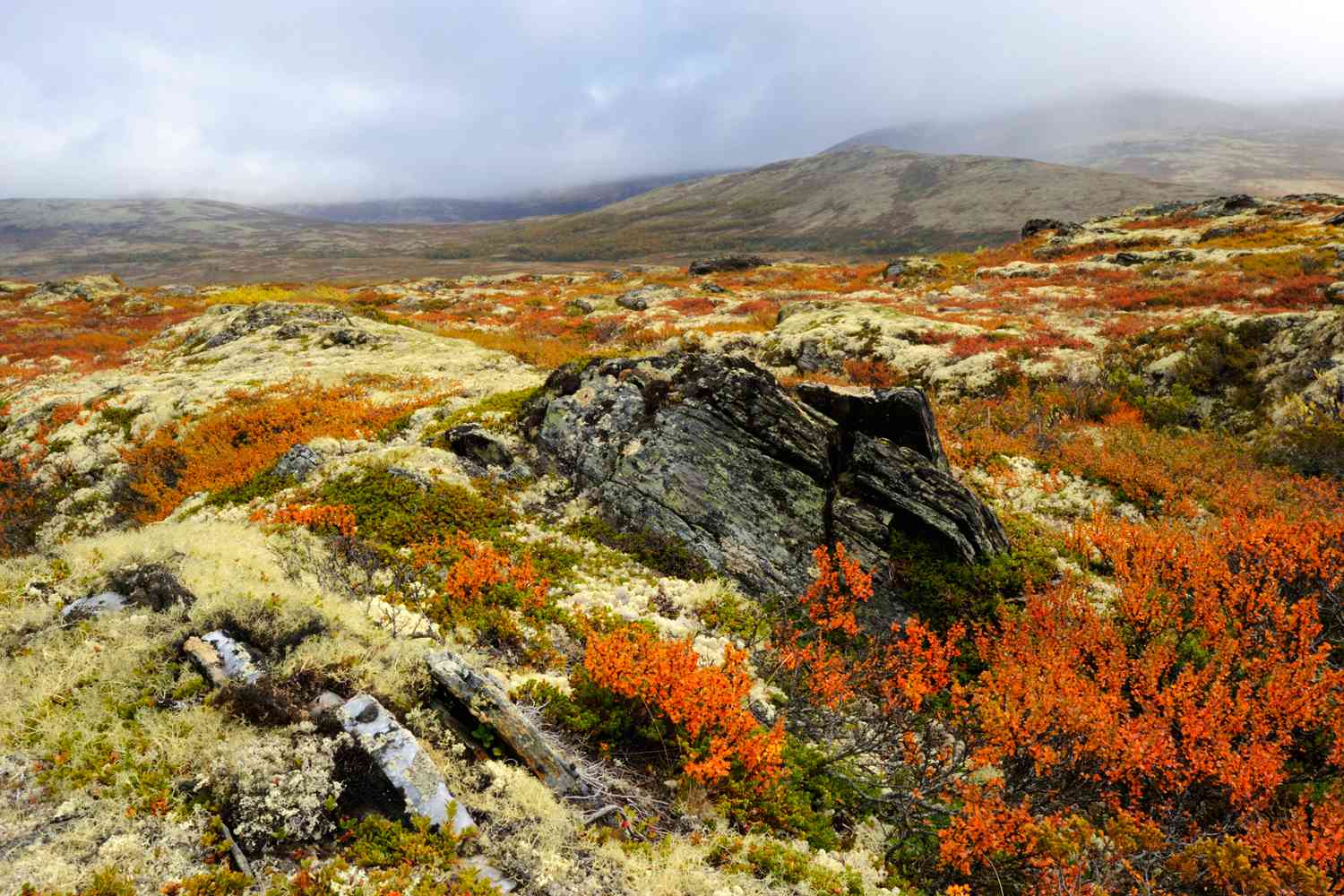Home>Science & Environment>Understanding Metamorphic Rocks: Formation, Types, And Characteristics


Science & Environment
Understanding Metamorphic Rocks: Formation, Types, And Characteristics
Published: February 19, 2024
Learn about the formation, types, and characteristics of metamorphic rocks in this comprehensive guide. Explore the science and environment behind these fascinating geological formations.
(Many of the links in this article redirect to a specific reviewed product. Your purchase of these products through affiliate links helps to generate commission for Temperatures.com, at no extra cost. Learn more)
Table of Contents
Introduction
Metamorphic rocks are a fascinating result of the Earth's dynamic processes, offering a window into the planet's geological history. Unlike igneous or sedimentary rocks, which form from molten magma or sediments, metamorphic rocks undergo a transformation from existing rocks under intense heat, pressure, or chemical processes. This transformative journey imbues them with unique characteristics and structures, making them a subject of great interest to geologists and rock enthusiasts alike.
The formation of metamorphic rocks is a testament to the Earth's ever-changing nature. The intense heat and pressure deep within the Earth's crust cause existing rocks to undergo a metamorphic process, leading to the development of new minerals and textures. This process often occurs in the presence of tectonic activity, where immense pressure and temperature changes shape the rocks over millions of years.
Metamorphic rocks come in a diverse array of types, each with its own distinct features and origins. From the striking swirls of marble to the intricate banding of gneiss, these rocks showcase the remarkable diversity of the Earth's geological processes. Understanding the characteristics and origins of these rocks provides valuable insights into the Earth's history and the forces that have shaped its surface over eons.
Moreover, the study of metamorphic rocks extends beyond mere geological curiosity. These rocks hold significant practical value, serving as essential materials in various industries. Their unique properties make them valuable resources for construction, sculpture, and even as indicators of past geological events. Furthermore, their presence often signifies the occurrence of tectonic events, aiding geologists in unraveling the complex history of the Earth's crust.
In this article, we will delve into the captivating world of metamorphic rocks, exploring their formation, diverse types, unique characteristics, and their crucial role in shaping the Earth's landscape. By gaining a deeper understanding of these remarkable rocks, we can appreciate the intricate processes that have shaped our planet and continue to influence its geological evolution.
The Process of Metamorphic Rock Formation
Metamorphic rock formation is a complex and intriguing process that unfolds deep within the Earth's crust. It begins with existing rocks, which can be igneous, sedimentary, or even other metamorphic rocks, undergoing a profound transformation due to intense heat, pressure, or chemical activity. This transformative journey often takes place in the presence of tectonic forces, where the Earth's dynamic processes exert immense pressure and temperature changes over extended periods.
The primary driving forces behind metamorphic rock formation are heat and pressure. When rocks are buried deep within the Earth's crust, they experience a rise in temperature and pressure, leading to fundamental changes in their mineral composition and structure. The heat causes the minerals within the rocks to recrystallize, forming new mineral assemblages that are stable under the elevated temperature and pressure conditions. This process, known as metamorphism, results in the development of distinct textures and patterns within the rocks, setting them apart from their original state.
In addition to heat and pressure, chemical processes also play a crucial role in metamorphic rock formation. The presence of fluids rich in dissolved minerals can facilitate chemical reactions within the rocks, leading to the growth of new minerals or the alteration of existing ones. This chemical activity further contributes to the unique characteristics of metamorphic rocks, adding layers of complexity to their formation process.
Metamorphic rocks can form through different types of metamorphism, each influenced by specific geological conditions. Regional metamorphism occurs over large areas and is associated with tectonic plate collisions, where immense pressure and temperature changes shape the rocks over millions of years. Contact metamorphism, on the other hand, occurs when rocks are subjected to high temperatures from nearby molten magma, leading to localized changes in their mineral composition and texture.
The process of metamorphic rock formation is a testament to the Earth's dynamic nature, showcasing the remarkable ability of existing rocks to undergo profound changes under the influence of geological forces. By unraveling the intricate processes involved in their formation, we gain valuable insights into the Earth's geological history and the forces that have shaped its surface over millions of years.
Common Types of Metamorphic Rocks
Metamorphic rocks encompass a diverse array of types, each distinguished by its unique mineral composition, texture, and formation history. These rocks undergo profound transformations from their original state, resulting in a rich tapestry of geological diversity. Understanding the common types of metamorphic rocks provides valuable insights into the Earth's dynamic processes and the remarkable variations that arise from the metamorphic transformation.
-
Slate: Slate is a fine-grained metamorphic rock that originates from the transformation of shale or mudstone. It exhibits excellent cleavage, allowing it to be split into thin, flat sheets. With its smooth texture and ability to hold a sharp edge, slate has been utilized for roofing, flooring, and as a material for writing tablets.
-
Marble: Marble, renowned for its exquisite beauty, is a metamorphic rock derived from the recrystallization of limestone or dolostone. This process imbues marble with stunning veining and a lustrous appearance, making it a prized material for sculptures, architectural elements, and decorative purposes.
-
Quartzite: Quartzite emerges from the metamorphism of quartz-rich sandstone, resulting in a rock of exceptional hardness and durability. Its granular texture and vibrant colors make it a sought-after material for countertops, wall cladding, and high-end architectural applications.
-
Schist: Schist is characterized by its medium to coarse-grained texture and a foliated structure, giving it a distinctive banded appearance. This metamorphic rock often contains minerals such as mica, garnet, and graphite, contributing to its striking visual appeal and suitability for ornamental uses.
-
Gneiss: Gneiss represents a high-grade metamorphic rock with alternating layers of light and dark minerals, creating a striking banded pattern. Its exceptional strength and resistance to weathering make it a valuable material for construction, paving, and as a decorative facing stone.
-
Anthracite: Anthracite, the highest rank of coal, undergoes metamorphism under high pressure and temperature, resulting in a rock with a high carbon content and a brilliant luster. Valued for its clean-burning properties, anthracite serves as a premium fuel source and is essential in industrial applications.
The diverse array of metamorphic rocks reflects the intricate processes that shape the Earth's crust, offering a testament to the planet's geological history and the transformative forces at play. By recognizing the distinct characteristics and applications of these rocks, we gain a deeper appreciation for the Earth's dynamic nature and the valuable resources it provides.
Characteristics of Metamorphic Rocks
Metamorphic rocks exhibit a diverse range of characteristics that set them apart from igneous and sedimentary rocks. These unique features are a testament to the transformative processes they undergo, resulting in distinct textures, mineral compositions, and structural patterns. Understanding the characteristics of metamorphic rocks provides valuable insights into their formation and the geological forces that have shaped them over millions of years.
One of the defining characteristics of metamorphic rocks is their distinct textures, which often result from the reorientation of mineral grains during the metamorphic process. Foliation, a prominent texture in many metamorphic rocks, refers to the alignment of mineral grains in parallel layers or bands. This alignment occurs due to the intense pressure exerted during metamorphism, giving rise to rocks with a layered appearance. In contrast, non-foliated metamorphic rocks lack this layered structure and typically exhibit a granular or compact texture, showcasing the recrystallization of minerals without distinct layering.
In addition to their textures, metamorphic rocks display a remarkable diversity of mineral compositions, reflecting the original minerals present in the parent rocks and the new minerals formed during metamorphism. The presence of minerals such as mica, quartz, feldspar, and garnet contributes to the unique appearance and properties of metamorphic rocks. For example, the presence of mica minerals in schist and gneiss imparts a distinctive sheen and foliated texture, while the abundance of quartz in quartzite results in its exceptional hardness and resistance to abrasion.
Furthermore, the structural patterns found in metamorphic rocks offer valuable insights into the geological processes that have shaped them. The presence of folding, faulting, and shearing within metamorphic rocks provides evidence of the tectonic forces and deformation they have experienced. These structural features not only contribute to the visual appeal of the rocks but also serve as indicators of the immense geological forces that have acted upon them.
The coloration of metamorphic rocks also varies widely, ranging from subtle earth tones to vibrant hues, depending on the mineral composition and the degree of metamorphic alteration. This diverse color palette adds to the aesthetic appeal of these rocks and makes them valuable for decorative and ornamental purposes.
Overall, the characteristics of metamorphic rocks offer a captivating glimpse into the Earth's dynamic processes and the transformative forces that have shaped its crust. By recognizing the distinct textures, mineral compositions, and structural patterns of these rocks, we gain a deeper appreciation for the intricate geological history embedded within them.
Uses and Importance of Metamorphic Rocks
Metamorphic rocks hold significant importance due to their diverse applications across various industries and their role as indicators of geological processes. Their unique properties, durability, and aesthetic appeal make them valuable resources for construction, artistic endeavors, and industrial processes.
One of the primary uses of metamorphic rocks is in the construction industry. Rocks such as marble, slate, and quartzite are prized for their strength, durability, and attractive appearance, making them ideal materials for countertops, flooring, wall cladding, and decorative elements in architectural designs. The exquisite veining of marble, the smooth texture of slate, and the vibrant colors of quartzite add a touch of elegance to interior and exterior spaces, enhancing the visual appeal of buildings and structures.
In addition to construction, metamorphic rocks play a crucial role in the artistic and sculptural realms. The unique textures, colors, and patterns found in rocks like marble, schist, and gneiss inspire artists and sculptors to create intricate works of art. Marble, in particular, has been revered for centuries as a medium for sculpting masterpieces, with its fine grain and ability to hold intricate details capturing the imagination of artists throughout history.
Metamorphic rocks also serve as indicators of past geological events and tectonic processes. The presence of specific metamorphic rocks in certain regions provides valuable insights into the geological history of an area, shedding light on the tectonic forces, temperature, and pressure conditions that have shaped the Earth's crust over time. Geologists rely on the identification and analysis of metamorphic rocks to unravel the complex geological evolution of different regions, contributing to our understanding of the Earth's dynamic processes.
Furthermore, certain metamorphic rocks, such as anthracite, hold significant industrial importance as high-grade fuel sources. Anthracite's high carbon content and clean-burning properties make it a valuable resource for heating, energy production, and industrial applications. Its use as a premium fuel source underscores the practical significance of metamorphic rocks in meeting energy demands and driving industrial processes.
The uses and importance of metamorphic rocks extend beyond their practical applications, encompassing their role in shaping landscapes, preserving geological records, and inspiring human creativity. By recognizing the diverse uses and significance of these rocks, we gain a deeper appreciation for the profound impact of geological processes on human civilization and the natural world.
Conclusion
In conclusion, the world of metamorphic rocks offers a captivating journey through the Earth's dynamic processes, showcasing the remarkable transformations that rocks undergo under intense heat, pressure, and chemical activity. From the formation of slate and marble to the intricate textures of schist and gneiss, metamorphic rocks provide a window into the planet's geological history, offering valuable insights into the forces that have shaped its surface over millions of years.
The process of metamorphic rock formation, driven by heat, pressure, and chemical activity, underscores the Earth's ever-changing nature and the profound transformations that existing rocks undergo deep within the crust. Whether through regional metamorphism associated with tectonic collisions or contact metamorphism influenced by nearby molten magma, the formation of metamorphic rocks reflects the intricate interplay of geological forces, contributing to the rich tapestry of rock diversity.
The diverse array of metamorphic rocks, each with its own unique characteristics and applications, highlights the remarkable variations that arise from the metamorphic transformation. From the practical uses of marble, slate, and quartzite in construction and artistic endeavors to the industrial significance of anthracite as a premium fuel source, these rocks play a crucial role in meeting human needs and shaping the built environment.
Furthermore, the characteristics of metamorphic rocks, including their distinct textures, mineral compositions, and structural patterns, offer a captivating glimpse into the Earth's dynamic processes and the transformative forces that have shaped its crust. Their diverse color palette and aesthetic appeal add to their significance, making them valuable for decorative and ornamental purposes.
The uses and importance of metamorphic rocks extend beyond their practical applications, encompassing their role as indicators of geological processes and tectonic events. Their presence provides valuable insights into the Earth's geological history, contributing to our understanding of the planet's dynamic evolution over geological timescales.
In essence, the study of metamorphic rocks not only enriches our understanding of the Earth's geological history but also underscores the profound influence of geological processes on human civilization and the natural world. By recognizing the intricate processes and diverse characteristics of these rocks, we gain a deeper appreciation for the Earth's dynamic nature and the valuable resources it provides.














